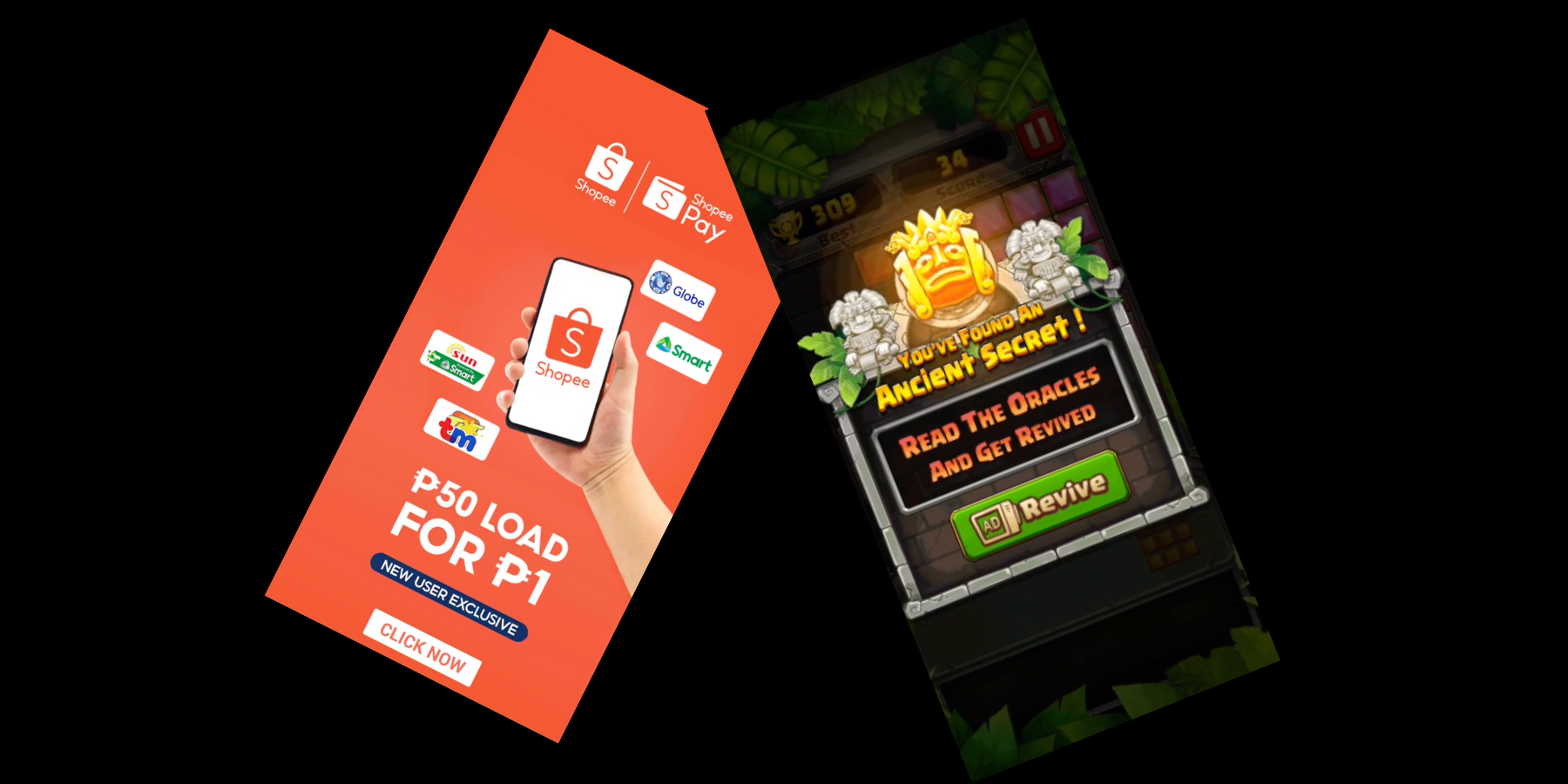In-app advertising is an important component of an app marketer’s overall strategy. Mobile advertising spending reached a record-breaking $223 billion worldwide in 2020, marking an increase of over 17% over the previous year. This figure is expected to surpass $339 billion by 2023. In this article, we define the three steps you need to perform in order to leverage in-app advertising. This includes definitions of key terms and information on cost models, ad formats and networks.
What is the scope of in-app advertising?
In-app advertising is a monetization model that can be mutually beneficial to developers, networks and advertisers in the mobile marketing ecosystem. For developers, in-app advertising involves sharing paid advertising with your mobile app’s audience. For advertisers, this is the practice of serving ads that advertise your mobile app within another app.
This type of advertising leverages the widespread app usage all over the world: 142.9 billion apps and games were downloaded in 2020. Google Play was responsible for 108.5 billion downloads in 2020, while iOS had 34.4 billion downloads. With so many users spending a significant amount of time each day in mobile apps, this presents several advertising opportunities for mobile app developers to increase revenue.
Mobile ad targeting also enables marketers to serve their ads to users based on criteria such as location, device type, operating system and interests. By reaching the perfect users for your mobile app, this type of hyper-targeting increases conversion rates, lowers churn and boosts in-app revenue.
 What are freemium apps?
What are freemium apps?
The popularity of in-app advertising has also led many developers to release their app in app stores for free. Using a freemium model, developers can generate a large number of downloads and earn revenue through in-app advertising. These ads can also be used as an incentive to upgrade to a subscription or premium service – which gives users everything they love about a mobile app without being exposed to advertising in-app. Music streaming app Spotify is a great example of a company that offers a freemium model.
How does cross-promotional mobile advertising work?
Another advertising option available to developers is a cross-promotional strategy. This is when you serve ads within your mobile app to increase downloads for another app that you own. It may also be an agreement between two apps owned by different developers that serve ads to increase downloads for both apps. For example, if you have a fitness app and a food and nutrition app, you can use your own in-app advertising opportunities to drive installs while also offering a superior user experience across both apps. Mobile games developers can also use a cross-promotional strategy to encourage users to install their latest game.
Learn more about effective mobile advertisements
How do you start advertising in apps?
The journey to discovering how to advertise on mobile apps can be broken down into three steps: choosing which ad network to work with, selecting the type of ads you want to serve and choosing a cost model. Here is everything you need to know and how you can get started.
1. How to choose an ad network for in-app advertising
Mobile advertising networks are platforms that can be used by advertisers and publishers for buying and selling ad space. Advertisers can use ad networks to find relevant advertising space within mobile apps, while publishers can sell their in-app advertising space to the highest bidder. This makes them a valuable part of the mobile marketing ecosystem that can be used to monetize and grow your mobile apps.
Business of Apps’s Artyom Dogtiev explains that “The pioneer in the mobile ad networks space was AdMob , that really took off after its acquisition in 2009 by Google, Inc. Over the course of more than 10 years since, the advertising networks space has grown with a small number of top tier companies controlling the market.” Other mobile ad networks include in-app marketplace AdColony, Google Ad Exchange, IronSource, growth specialists Remerge, HUAWEI Ads, programmatic experts PubMatic and Hitapps. Examples of popular Mobile Measurement Partners (MMPs) include AppsFlyer and Adjust.
Everything you need to know to start advertising in apps
2. Choose the type of ad you want to serve to your target audience
The next question you will want to answer is which ad formats are best suited for your campaign. The versatility of mobile app advertising space means that there are several options when it comes to ad formats. Here are the most popular options that you may want to choose from:
- Banner ads: These are traditional ads that can be used in-app in a similar manner to how they are used on desktop: a banner image is placed at the top or bottom of a user’s screen.
 Interstitial ads: These are ads that expand to take up the entire screen. This provides opportunities for a more engaging ad, but must be used at opportune moments within the user experience to avoid frustrating the user.
Interstitial ads: These are ads that expand to take up the entire screen. This provides opportunities for a more engaging ad, but must be used at opportune moments within the user experience to avoid frustrating the user.
- Rewarded ads: This is an ad format that rewards users for viewing an ad. For example, a mobile game can give a user in-app currency in exchange for viewing a full video. This is a smart ad format for cross-promotional campaigns where you can reward users for downloading your other apps.
- Native advertising: This is an ad format that requires the ad to match the look and feel of the mobile app’s digital environment. For this reason, it is an unobtrusive ad format.
Learn more about how mobile app ads work
3. Choose your in-app advertising cost model
Your third step will be choosing the right cost model for your in-app advertising campaigns. You can choose from several cost models such as:
- Cost Per Mille (CPM): The publisher is paid for every thousand impressions recorded on a single ad.
- Cost Per Click (CPC): The publisher is paid for every time a user clicks on an ad.
- Cost Per Install (CPI): The publisher is paid for each install that occurs as a result of an ad.
- Cost per Action (CPA): The publisher is paid every time a specified action is completed in-app after the install.
With your mobile ad network, ad formats and cost models planned, you’re ready to dive deeper into in-app advertising and start leveraging this popular marketing method. If you found this article for how to start advertising on apps useful, you may also be interested in 6 reasons why in-app ads should be an important part of your marketing mix.





